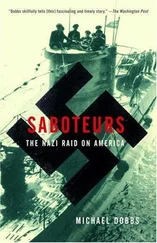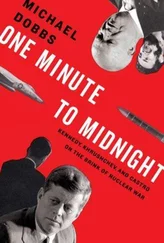Operation Curtain, as it was dubbed by the Soviets, was launched in April 1984. Inevitably there were setbacks as well as successes. Supported by the local population, the mujahedin possessed a superb intelligence network and were often able to turn the tables on their Soviet tormentors. But the results were sufficiently impressive to persuade Gorbachev to authorize an escalation in the war in the spring of 1985, shortly after he came to power. 127For the first time in six years the Soviets seemed to have a chance of winning “the Game”—provided, of course, that the “imperialists” did not succeed in turning one of their pawns into a queen.
IN SEPTEMBER 1986 a small band of mujahedin led by a Commander Ghaffar left a guerrilla training camp in Pakistan and crossed the Khyber Pass. They crawled undetected to within a mile of the Jalalabad airport. From a well-hidden position, on a small hill overlooking the airfield, Ghaffar’s men could observe Soviet soldiers moving around inside the perimeter fence. Soviet tanks and armored personnel carriers stood at each end of the runway. The mujahedin had split into three teams of three men each, deployed in a rough triangular formation, within shouting distance of one another. They had been waiting, crouched behind the bushes, for more than three hours now. Each team was equipped with one of the most sophisticated pieces of electronic gadgetry yet devised by the U.S. Army, the Stinger missile, a portable air defense system capable of downing an enemy aircraft from a distance of three miles.
In midafternoon, as the shadows were lengthening over the mountains, Ghaffar’s patience was finally rewarded. No fewer than eight Mi-24 helicopter gunships—the most hated weapon in the Soviet arsenal—were approaching for a landing. The commander gave a shout. The three marksmen hoisted the launchers onto their shoulders and trained the sights onto the approaching Mi-24S, with their telltale glass-covered noses and rocket pods hanging down beneath the fuselage. With a flick of his left thumb, each marksman punched a button that instructed the missile’s electronic brain to sense the infrared heat being emitted from the helicopter engines. There was a series of loud pinging sounds, the signal that the missiles had locked on to their targets. Ghaffar shouted, “Fire,” and the marksmen pulled the triggers. Ecstatic chants of Allah o Akbar (God is great) rose into the air as the missiles whooshed into the sky at a speed of more than twelve hundred miles per hour.
Seconds later two of the helicopters burst into flames and plummeted to the ground. There was a wild scramble as the firing parties reloaded. Two more missiles were fired, downing another helicopter. The first five Stinger missiles ever fired in combat had resulted in three kills and two misses, a 60 percent success rate. The mujahedin were jubilant. An Afghan cameraman attempting to record the scene for the benefit of the spymasters in Peshawar was so excited that his film consisted mainly of blurred shots of sky, stony ground, and black smoke pouring from the wreckage. 128
There was jubilation too in the White House and the Pentagon when news of the ambush reached Washington. The Stinger missile had become a well-publicized symbol of U.S. clandestine support for the Afghan rebels in their struggle against the Soviet invader. The “most overt covert operation in history,” somebody called it. Together with the decision to supply satellite intelligence and other high-tech American weaponry to the mujahedin, it helped change the course of the Afghan War.
From now on it would be much more difficult for the Soviets to conduct the kind of low strafing of rebel positions that had proved so effective in 1985 and early 1986. The scope of spetsnaz hunt-and-destroy missions was much reduced. Soviet pilots would change their operating procedures, flying at high altitude, beyond the range of the mujahedin. When they came in to land, they adopted a curious corkscrew technique, descending in a tight spiral and firing flares every few seconds to confuse the homing devices of the Stingers. The Soviet Defense Ministry was so taken aback by the new weaponry that it promised the title “Hero of the Soviet Union” to the first soldier to capture a Stinger from the mujahedin. The first batch of intact Stingers was delivered to Moscow in the fall of 1986. 129
BY INVADING AFGHANISTAN in December 1979, Brezhnev and his colleagues handed the West a diplomatic victory that had hitherto proved way beyond the reach, or even the imagination, of the smartest policy makers in Washington, London, or Paris. The spectacle of Soviet aggression against a Muslim Third World country—one of the founding members of the non-aligned movement—brought the most unlikely political bedfellows together. In the space of a few months a remarkable anti-Soviet coalition had taken shape. It spanned the entire ideological spectrum: American capitalists and Chinese Communists, conservative Saudi princes and Iranian Islamic fundamentalists, Pakistani generals and European peaceniks. The only people left in Moscow’s camp were diehard Kremlin clients.
The Politburo was aware that there would be near-universal condemnation of its action. A few days after the invasion a prominent Moscow think tank warned Soviet leaders that they were up against “the united resources of the U.S., other NATO countries, China, Australia, the Islamic states and an army of Afghan insurgents.” 130Such warnings fell on deaf ears. Soviet leaders were convinced that the international hue and cry would soon die down, just as it had after the invasion of Czechoslovakia in 1968.
In addition to howls of outrage, the invasion of Afghanistan caused an immediate toughening in Western policies toward Moscow. The American president, Jimmy Carter, reacted to Brezhnev’s adventure with the fury of a jilted suitor. He believed he had done his best to improve relations with the rival superpower, but his good intentions had been mistaken for weakness. He had been duped and betrayed by his would-be Soviet partners. He commented bitterly that he had learned more about the real nature of the Soviet Union in a few days than in the previous three years of his presidency. Describing the invasion as “the greatest threat to peace since the Second World War,” he authorized a series of actions designed to punish the Soviets and bolster American defenses. 131Publicly announced sanctions included a ban on high-technology exports to the Soviet Union, an embargo on grain sales, a delay in ratifying the SALT-2 arms treaty, and a boycott of the 1980 Summer Olympics in Moscow. Privately Carter also approved covert arms supplies to the Afghan resistance and military consultations with China. 132
The Reagan administration expanded these measures into an anti-Soviet crusade, led by a former World War II spymaster named William Casey. A Wall Street millionaire, Casey had been appointed director of the Central Intelligence Agency as a reward for managing Reagan’s presidential campaign. His Jesuit upbringing had taught him to view international politics as an eternal struggle of good against evil. He saw himself as the foreign policy conscience of the administration. His wartime experiences—he had organized an intelligence network behind German lines—had made him a firm believer in the value of covert action. Convinced that clandestine operations had contributed significantly to the defeat of Nazi Germany, he wanted to apply similar methods to the Soviet Union. “It is important… to understand how clandestine intelligence, covert action, and organized resistance saved blood and treasure in defeating Hitler,” he writes in his wartime memoirs, published posthumously. “These capabilities may be more important than missiles and satellites in meeting crises yet to come, and point to the potential for dissident action against the control centers and lines of communication of a totalitarian power.” 133
Читать дальше












